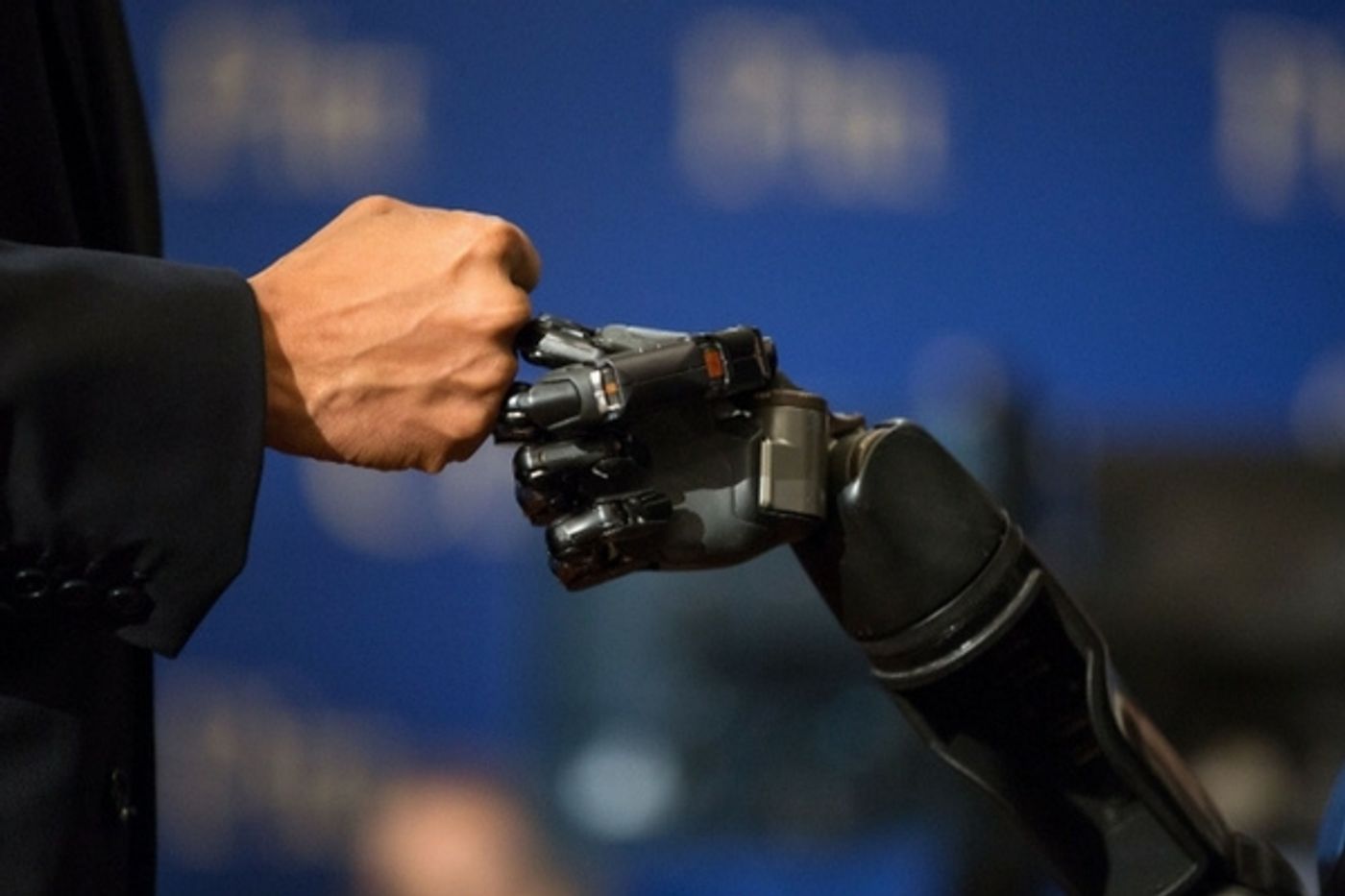Implants Give a Paralyzed Patient a Sense of Touch
When a person has lost sensation in a part of the body, whether to an accident or disease, they don't just lose movement, but they also lose the sense of touch. Even with the advances in technology that have been made, being unable to feel a loved one's touch, the warm fur of a family pet or just the texture of sand on the beach are lost to those who have suffered a traumatic injury or paralysis. New technology from the University of Pittsburgh's Brain Institute might be able to give patients some of that sensation back.

In a study published recently in the journal Science Translational Medicine, a team of researchers led by Robert Gaunt, Ph.D., assistant professor of physical medicine and rehabilitation at the University demonstrated how a patient, connected to the Brain Computer Interface (BCI) developed there, could feel the actual sensation of touch via a robotic arm. It was made possible by implants in the brain that control the arm, and it was a medical first.
Nathan Copeland, a 28-year-old patient who was paralyzed from the neck down in a car accident, was the first to experience the new technology. While he has some use of his upper arms and shoulders, he cannot feel or move his hands and fingers.
When 28-year-old Nathan Copeland came out of brain surgery and was connected to the Brain Computer Interface (BCI), developed by researchers at the University of Pittsburgh and UPMC he was amazed. Researchers there demonstrated for the first time in humans a technology that allows Mr. Copeland to experience the sensation of touch through a robotic arm that he controls with his brain. A microelectrode array was implanted in his brain in a very specific area where neurons that control hand movement and touch are located. Years of work by the research team in finding the precise location for the implants to go, along with the development of the electrode array and the actual build of the robotic arm were all parts of the same goal: allowing patients to control a robotic arm that could do things like pick up food and sense touch.
Study co-author Andrew B. Schwartz, Ph.D., distinguished professor of neurobiology and chair of systems neuroscience, Pitt School of Medicine said in a press release, "The most important result in this study is that microstimulation of sensory cortex can elicit natural sensation instead of tingling. This stimulation is safe, and the evoked sensations are stable over months. There is still a lot of research that needs to be carried out to better understand the stimulation patterns needed to help patients make better movements."
Being able to have a robotic arm that sits adjacent to a patient and can be controlled via the patient's brain is a mixture of medicine, technology, research, and, some would say, good luck. Other paralyzed patients have participated in similar research at Pittsburgh including Jan Scheuermann who used an implant controlled robotic arm to pick up a piece of chocolate and eat it and Tim Hemmes who was able to reach out and touch his girlfriend's hand. For Nathan, a big moment for him was a fist bump that he was able to do with President Barack Obama who visited the research lab to see "first hand" how the technology worked. DARPA (The Defense Advanced Research Project Agency) funded a large part of the program via its Revolutionizing Prosthetics program. Take a look at the video to see how it all came together.
Sources: University of Pittsburgh, The Washington Post, Science Translational Medicine, Nature.com








